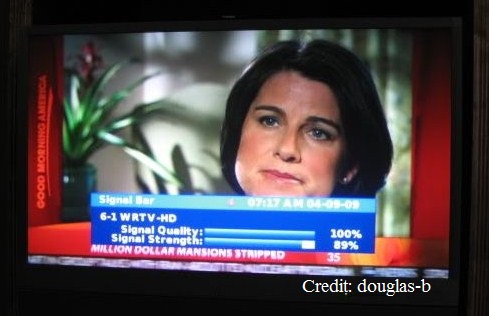Quote:
|
Simply relocating the C2V from its current location is likely all you need to do.
|
I agree, your 91XG is going OK.
"if it ain't broke don't fix it"
Quote:
|
Barring that, simply moving the antenna to the rear edge of the garage roof
|
That's not far enough back.
Quote:
|
I'd even be inclined to try it on your deck if that gets you out from behind the neighboring house.
|
If I were there, that's what I would do. You would see me out there with your C2V on a 10 ft mast on your deck testing for uncorrected errors. I would want to know if the C2V in a better location would be enough. If you put up another UHF/VHF-hi antenna and it sends good signals to your Roamio, how would you know if the improvement was because of the change of location, or change to a new antenna?
If I didn't try the C2V on the deck, I would aim it NE out an upstairs window as a temporary test.
Quote:
|
I'd only consider the second one plus the HBU33 as candidates
|
The second is good; HBU33 or 22.....not much difference in specs.
CM3016 too big because it is for VHF-low.
Quote:
|
If that existing dish mount has support "legs" for a larger 18x24 dish, it's sturdy enough to install an extension pipe into it an raises the C2V up. Depending on the specific mount, you might easily get 5-8' of additional elevation which might clear the neighbor's rooftop.
|
Good idea; I didn't think of that.
Quote:
|
Let's say that dish doesn't have "legs" is there a mount that could be used in its current location that would give it enough height there to alleviate any issues? Just wanting to consider all the possibilities.
|
A 5 ft tripod mount with a 10 ft mast might clear the roof.
VMP TR-60 60 Inch Roof Mount Tripod for Antenna Mast
http://www.3starinc.com/60_inch_roof...enna_mast.html
https://www.google.com/?gws_rd=ssl#q...ount+vmp+TR+60
Solid Signal Availability: More Than Two Weeks
Amazon: Sign up to be notified when this item becomes available.
http://www.solidsignal.com/search.asp?q=tripod mount
TR-60 INFO:
http://www.videomount.com/pages/Sate.../TR-Series/154
TR-60 instructions:
http://www.videomount.com/pages.php?download_id=797
A 10 ft mast is expensive to ship. Some Radio Shack stores in your area can get you one:
http://www.radioshack.com/antennacra...l#.VG6gtIwo61t
Quote:
|
I know you suggested possibly moving the 91XG up to where rabbit is suggested earlier in the thread. What advantage do you see by doing that?
|
You would have to measure the difference.
Quote:
|
After a certain point, practical experience has to take over from mere numbers since the numbers are of limited accuracy. I've learned (the hard way) that putting the antenna where its odds are the best is usually the most direct path to success
|
Very true.
Quote:
|
My next question is regarding aim. How would the antennas be able to be aimed precisely (particularly critical for the 91XG) because its not like that part of the roof is able to be walked around on like where it is located now.
|
Interesting question. The initial aim can be done by using the green signal lines (90 degree vertical map, not 45 degree bird's eye) shown on the satellite map. They are based on true north, so you can aim the antenna at a landmark on that line. You can also use a compass with the magnetic azimuth.
I have found that the best aim for an antenna is not always where you have the greatest signal strength. I was doing some experiments using an Apex DT502 converter box that has two signal bars; one for signal strength and one for signal quality. When I rotated my CM4221 UHF antenna slightly to the right, the signal strength went down very slightly, but the signal quality increased a large amount.

As you have already learned, what good is a strong signal if it also isn't a high quality signal with few or no errors?
You are now a member of the Antenna Measurements Club, because you passed, with flying colors, the initiation when you did the attenuator measurements. When you increased the attenuation, the SNR dropped down to below 15, and you saw an increase in uncorrected errors.
To make the final aim of an antenna, increase the attenuation until the SNR gets down to about 16, which is just above the "digital cliff." This is where the aim is most critical. Then rotate the antenna slightly each side of that aim to look for a increase in SNR, and a decrease in errors.
The see how well your 91XG is doing, try the attenuator test in its coax line between the amp and the input of the AC7. Add enough attenuation to bring the SNR down to 16 dB. This tells you how much "fade margin" you have at that location to deal with changes in signal strength.